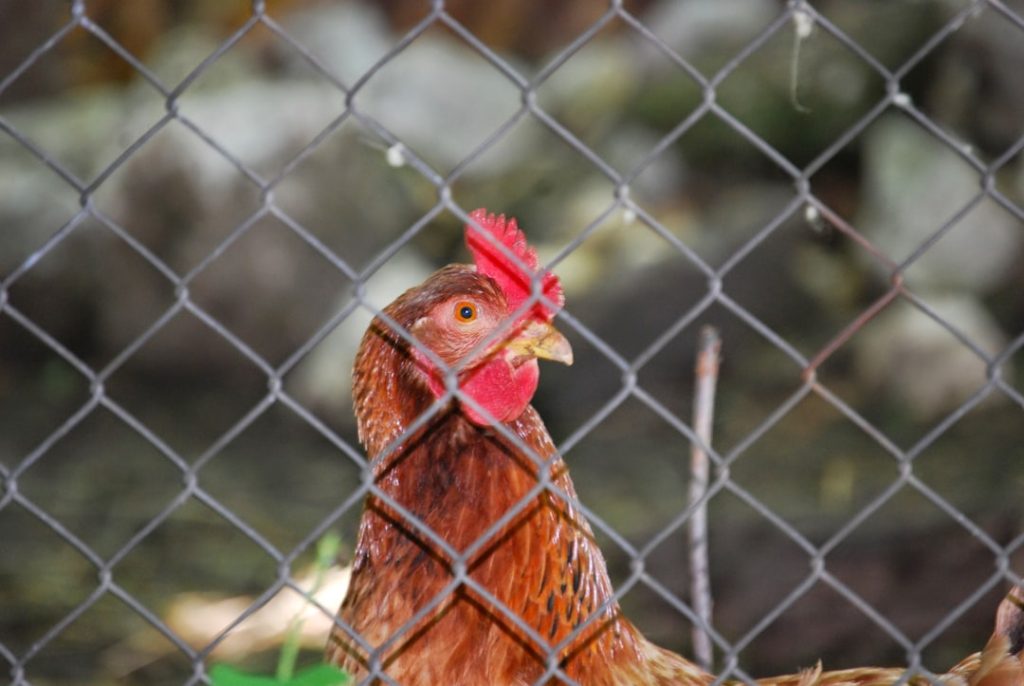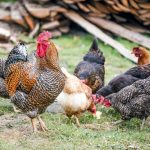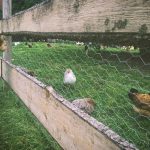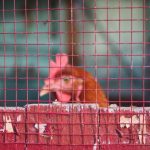Chickens are social creatures with natural foraging instincts and a heightened awareness of potential threats due to their prey status. These behaviors significantly influence their management and containment. Curious by nature, chickens may attempt to escape if they feel confined or are seeking better food sources.
Their flying abilities allow them to easily clear fences and other barriers if not properly managed. Chickens possess a strong homing instinct, which can lead them to return to their coop even after escaping. This trait can make long-term containment challenging.
Additionally, chickens are creatures of habit, often repeating successful escape routes once discovered. Understanding these behavioral patterns is crucial for chicken owners to anticipate and prevent potential escapes effectively. By recognizing these inherent behaviors, chicken keepers can implement proactive measures to ensure their flock remains safely contained while still allowing for natural behaviors and instincts to be expressed.
This knowledge enables owners to create appropriate enclosures and management strategies that balance the chickens’ needs with the necessity of confinement.
Table of Contents
- 1 Implementing physical barriers
- 2 Clipping wings
- 3 Providing adequate space and enrichment
- 4 Regularly trimming feathers
- 5 Using deterrents
- 6 Supervising free-range time
- 7 FAQs
- 7.1 What are some methods to keep chickens from flying out of the coop?
- 7.2 Is it safe to clip a chicken’s flight feathers?
- 7.3 What are the benefits of adding a roof or netting to the top of the coop?
- 7.4 How much space should be provided inside the coop to discourage chickens from flying out?
- 7.5 Are there any other methods to keep chickens from flying out of the coop?
Key Takeaways
- Chickens are social animals and have natural behaviors such as scratching, pecking, and dust bathing.
- Physical barriers such as fences and netting can help prevent chickens from escaping or entering unwanted areas.
- Clipping wings can be an effective method to prevent chickens from flying over fences and escaping.
- Providing adequate space and enrichment, such as perches and dust bathing areas, can help reduce the likelihood of chickens trying to escape.
- Regularly trimming feathers can also help prevent chickens from flying over fences and escaping.
- Deterrents such as scarecrows, noise makers, and predator decoys can help discourage chickens from trying to escape.
- Supervising free-range time can help ensure that chickens stay within designated areas and reduce the risk of escape.
Implementing physical barriers
Installing Physical Barriers
One of the most effective ways to prevent chickens from escaping is by implementing physical barriers around their designated areas. This can include installing tall fences that are difficult for chickens to fly over, as well as burying the bottom of the fence underground to prevent them from digging underneath it. Additionally, adding a roof or netting over the top of the enclosure can prevent chickens from flying out.
Maintenance and Inspection
It’s important to ensure that the physical barriers are secure and free from any gaps or weak spots that chickens could exploit. Regular maintenance and inspection of the barriers is crucial to ensure their effectiveness.
Alternative Options for Physical Barriers
Another option for physical barriers is using chicken wire or mesh to create a secure enclosure. This can be particularly effective for smaller areas or for creating separate sections within a larger space. It’s important to ensure that the wire or mesh is securely fastened and that there are no gaps or weak spots that chickens could exploit. Additionally, adding a skirt of wire around the perimeter of the enclosure can prevent chickens from digging underneath the barrier.
Ensuring Chicken Safety and Well-being
By implementing physical barriers, chicken owners can effectively prevent their birds from escaping and ensure their safety and well-being.
Clipping wings
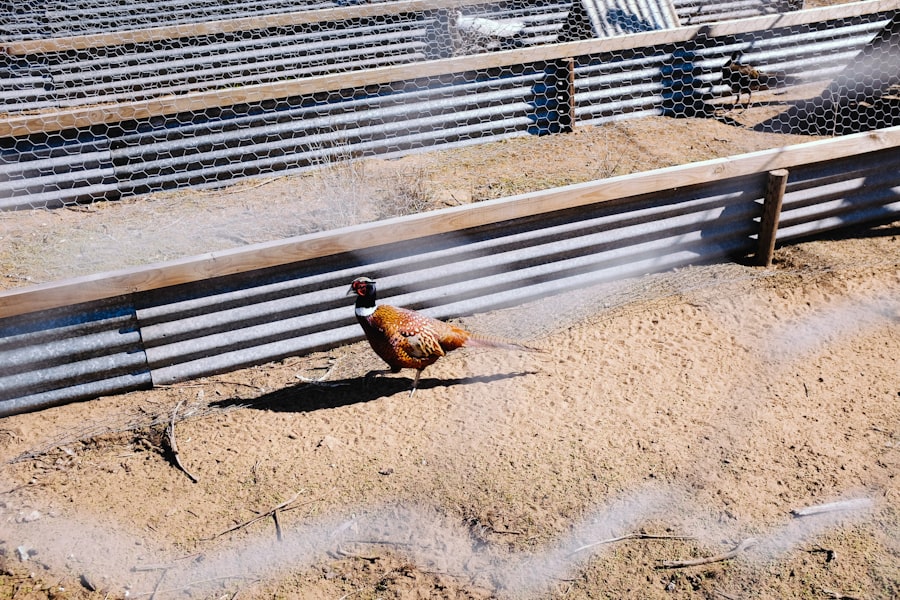
Another method for preventing chickens from escaping is by clipping their wings. This involves trimming the primary feathers on one wing to prevent them from achieving lift when they attempt to fly. It’s important to note that wing clipping should be done carefully and with proper guidance to ensure that it is done safely and humanely.
Additionally, wing clipping is not a permanent solution and will need to be repeated as the feathers grow back. However, it can be an effective short-term solution for preventing chickens from flying over physical barriers. When clipping a chicken’s wings, it’s important to only trim the primary feathers on one wing to maintain balance and prevent injury.
It’s also crucial to use sharp, clean scissors and to avoid cutting any blood feathers, as this can cause pain and bleeding. Wing clipping should be done by someone with experience and knowledge of avian anatomy to ensure that it is done correctly. By clipping their wings, chicken owners can effectively prevent their birds from flying over physical barriers and escaping their designated areas.
Providing adequate space and enrichment
One of the reasons chickens may attempt to escape is due to feeling confined or bored in their designated areas. Providing adequate space and enrichment can help prevent this behavior and keep chickens content and fulfilled in their environment. This can include ensuring that the coop and outdoor run are spacious enough for the number of chickens being kept, as well as providing opportunities for natural behaviors such as scratching, dust bathing, and perching.
Additionally, adding enrichment items such as hanging treats, toys, or mirrors can help keep chickens mentally stimulated and prevent them from seeking ways to escape. It’s important to regularly assess the living space and enrichment provided to ensure that it meets the needs of the chickens. This may involve periodically rotating or adding new enrichment items, as well as ensuring that the outdoor area is free from hazards and provides opportunities for natural behaviors.
By providing adequate space and enrichment, chicken owners can help prevent their birds from feeling the need to escape and ensure their overall well-being.
Regularly trimming feathers
In addition to clipping wings, regularly trimming feathers can also help prevent chickens from escaping. This involves trimming the flight feathers on both wings to prevent them from achieving lift when attempting to fly. Like wing clipping, feather trimming should be done carefully and with proper guidance to ensure that it is done safely and humanely.
It’s important to use sharp, clean scissors and avoid cutting any blood feathers to prevent pain and bleeding. Regular feather trimming will need to be repeated as the feathers grow back, but it can be an effective method for preventing chickens from flying over physical barriers. When trimming feathers, it’s important to only trim the flight feathers on both wings to maintain balance and prevent injury.
Feather trimming should be done by someone with experience and knowledge of avian anatomy to ensure that it is done correctly. By regularly trimming their feathers, chicken owners can effectively prevent their birds from flying over physical barriers and escaping their designated areas.
Using deterrents
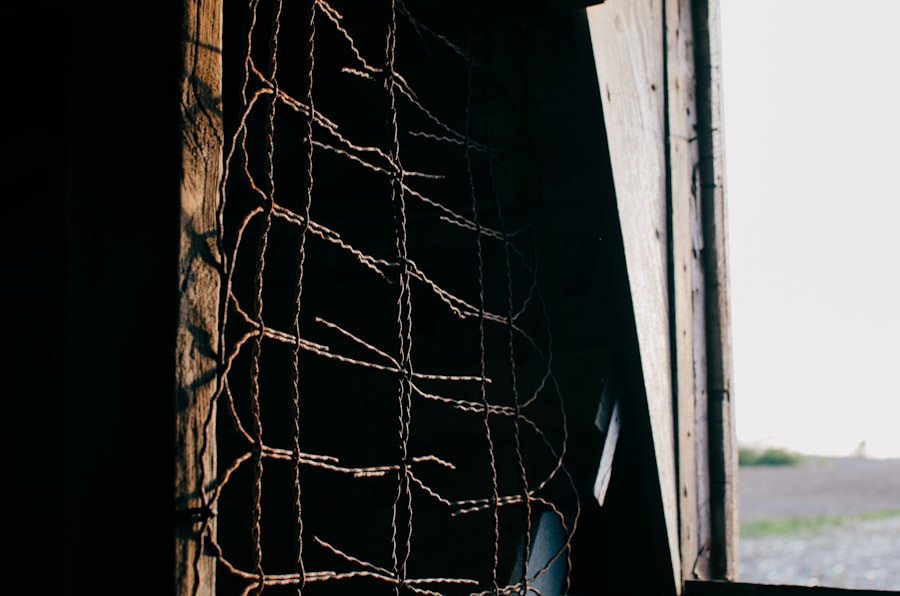
Visual and Audible Deterrents
This can include using visual deterrents such as scarecrows or reflective objects that move in the wind, as well as audible deterrents such as noise-making devices or predator calls.
Natural Deterrents
Additionally, using natural deterrents such as planting thorny bushes or installing motion-activated sprinklers can help deter chickens from attempting to escape.
Maintaining Effectiveness and Alternative Methods
It’s important to regularly assess and rotate deterrents to prevent chickens from becoming accustomed to them. Another option for deterrents is using taste aversions such as bitter sprays or hot pepper solutions on potential escape routes or areas where chickens are not supposed to go. This can help discourage them from attempting to escape or explore areas outside of their designated space.
By using deterrents, chicken owners can effectively prevent their birds from attempting to escape and ensure their safety and well-being.
Supervising free-range time
If allowing chickens free-range time outside of their designated areas, it’s important to supervise them closely to prevent potential escape attempts. This can include keeping an eye on them while they are outside, as well as providing distractions such as treats or toys to keep them occupied and prevent them from seeking ways to escape. Additionally, regularly assessing the outdoor area for potential escape routes or hazards can help prevent chickens from attempting to escape.
Supervising free-range time also allows chicken owners to observe their birds’ behavior and identify any potential escape attempts or areas of concern. This can help them take proactive measures to prevent escapes in the future and ensure the safety and well-being of their birds. By supervising free-range time, chicken owners can effectively prevent their birds from attempting to escape and provide them with opportunities for natural behaviors in a safe and controlled environment.
In conclusion, understanding the behavior of chickens is crucial when it comes to preventing them from escaping their designated areas. By implementing physical barriers, clipping wings, providing adequate space and enrichment, regularly trimming feathers, using deterrents, and supervising free-range time, chicken owners can effectively prevent their birds from attempting to escape and ensure their safety and well-being. It’s important to regularly assess and adjust these methods as needed to ensure their effectiveness in preventing escapes.
With proper management and care, chicken owners can create a safe and fulfilling environment for their birds while preventing potential escape attempts.
If you’re looking for more tips on keeping chickens safe and secure in their coop, check out this article on The Chicken Coop Country Diner. It offers valuable insights on how to create a comfortable and secure environment for your feathered friends.
FAQs
What are some methods to keep chickens from flying out of the coop?
Some methods to keep chickens from flying out of the coop include clipping their flight feathers, adding a roof or netting to the top of the coop, and providing enough space and entertainment inside the coop to discourage them from wanting to fly out.
Is it safe to clip a chicken’s flight feathers?
Yes, it is safe to clip a chicken’s flight feathers if done properly. It is a painless procedure that involves trimming the primary feathers on one wing to prevent the chicken from achieving lift when it tries to fly.
What are the benefits of adding a roof or netting to the top of the coop?
Adding a roof or netting to the top of the coop can prevent chickens from flying out and protect them from predators such as hawks and other birds of prey. It also provides additional protection from the elements such as rain and snow.
How much space should be provided inside the coop to discourage chickens from flying out?
Chickens should have at least 2-3 square feet of space inside the coop to discourage them from wanting to fly out. Providing enough space, perches, and entertainment such as toys or hanging treats can keep them content and less likely to try to escape.
Are there any other methods to keep chickens from flying out of the coop?
Other methods to keep chickens from flying out of the coop include using deterrents such as shiny objects or noise makers, training them to stay inside the coop using positive reinforcement, and ensuring that the coop is secure and free from any gaps or openings that they could escape through.
Meet Walter, the feathered-friend fanatic of Florida! Nestled in the sunshine state, Walter struts through life with his feathered companions, clucking his way to happiness. With a coop that’s fancier than a five-star hotel, he’s the Don Juan of the chicken world. When he’s not teaching his hens to do the cha-cha, you’ll find him in a heated debate with his prized rooster, Sir Clucks-a-Lot. Walter’s poultry passion is no yolk; he’s the sunny-side-up guy you never knew you needed in your flock of friends!

